Theory of music (2)
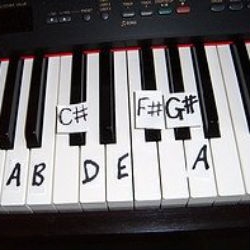
Some more theory
We press on with our job of learning theory of music. We consolidate what we already know and move on to new things. We will learn some more scales in sharp keys and then look at some flat keys. Music theory is all about writing and describing music.
The photos are all my own.
Scale of A major
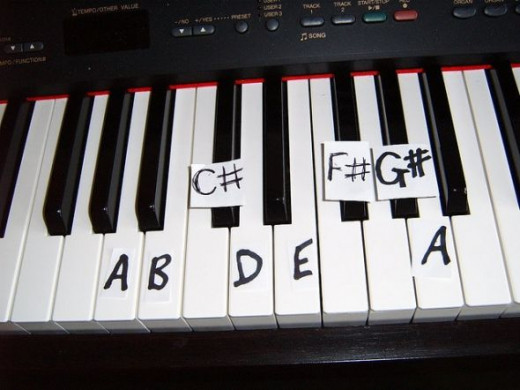
Scale of A major (written)
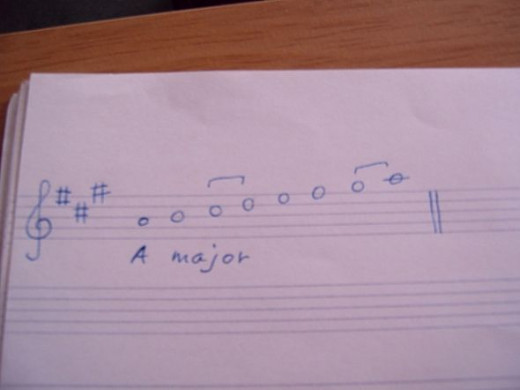
Sharps and flats
We ended the last lens looking at the D major scale. If you use the rule we used before we will go up five notes to the note A and start our next scale here. Again we take the sharp notes from D major and use them and then sharpen the G as well. You will see that the pattern of tones and semitones is the same in all the scales we have used so far. The pattern is TTS T TTS.
You can carry on with this method until you have used seven sharps.
But now we will turn to the flat keys.If we think back to C major with no sharps and no flats, we can now move down five notes to F, start on that note but add a flat. In this case B flat. The flats and sharps keep to a pattern. If you have one sharp it is always F#, and if you have one flat it is always B flat. If you learn the following silly sentence it will give you the order of sharps, just taking the first letter of each word, Five Cats Go Down An Empty Barrel.
Backwards will give you the order of flats B E A D G C F which is also handy because it starts off spelling "bead" and you then have only three more to remember. But before this you have to remember to start with the C major scale with no sharps or flats and then go up five notes for sharp keys and down five notes for flat keys. Below here is the scale of F major.
Scale of F major(written)
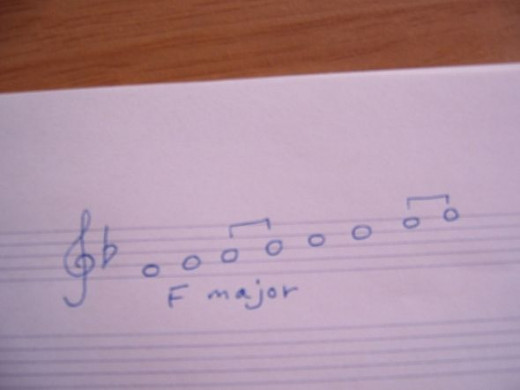
Black notes can be both sharps and flats
F# is the black note to the right of F, but that note is also to the left of G and can be known as G flat. This is very confusing at first, but I am just mentioning it in passing at the moment. You don't need to worry about it, all will become clear as you progress. Just fix it in your mind that sharps are always one semitone to the right of the original note; flats are always one semitone to the left of the original note. This leads us on the ask "Where is E sharp?" Take the above rule and go one semitone to the right of E. You are on the note we previously called F. This note is also E#, even though it is a white note. You will probably need to read this through again to get it fixed in your mind. This is, however looking into the future rather. Maybe it would be best to come back to it later Theory of music is quite complicated, but logical..
,
Scale of B flat major
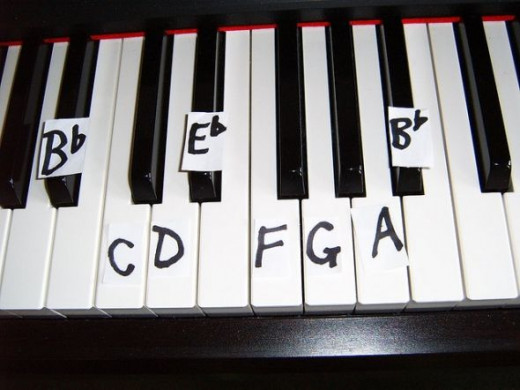
Scale of B flat major
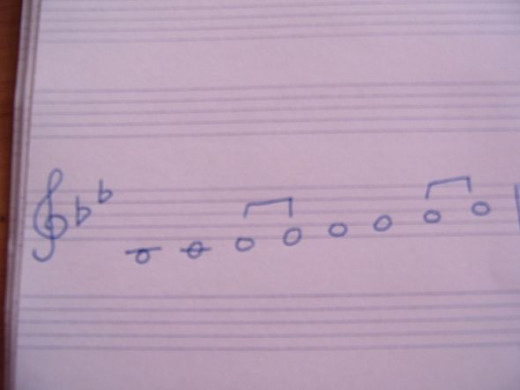
The key signature
In Theory of music 1 I wrote the scales with their sharps written next to the note they affected. In this lens I have put the sharps and flats together at the beginning of the scale. This is called the key signature and tells us, in the case of B flat major, that all the B's and E's are flatted Someone playing the notes has to remember to use these two flats all the time unless they are shown differently. The way to show this is to put in an "accidental." If you want to change a flat, or a sharp, back to normal you put a "natural" before the note. A natural can be seen in the photo below.
The natural

Length of note

How do we show quick and slow notes?
This is going to be fun. In Europe we call the longest note a semibreve, but in America you call it a whole note. The next is a minim, or half note. Then shorter again is the crotchet, or quarter note; the quaver or eighth note; the semi-quaver or 16th note etc. I show these in the chart above and show that each one is worth two of the note below.
This will help you to understand length of note
The A major arpeggio
To form the A major arpeggio we follow the rule shown in Theory of Music 1. From the scale we take the first, third and fifth notes, plus the top A to form the arpeggio. See if you can work out what to do to form the F major and B flat major arpeggios. Notice that you do not use all of the sharps and flats involved in the scales.



